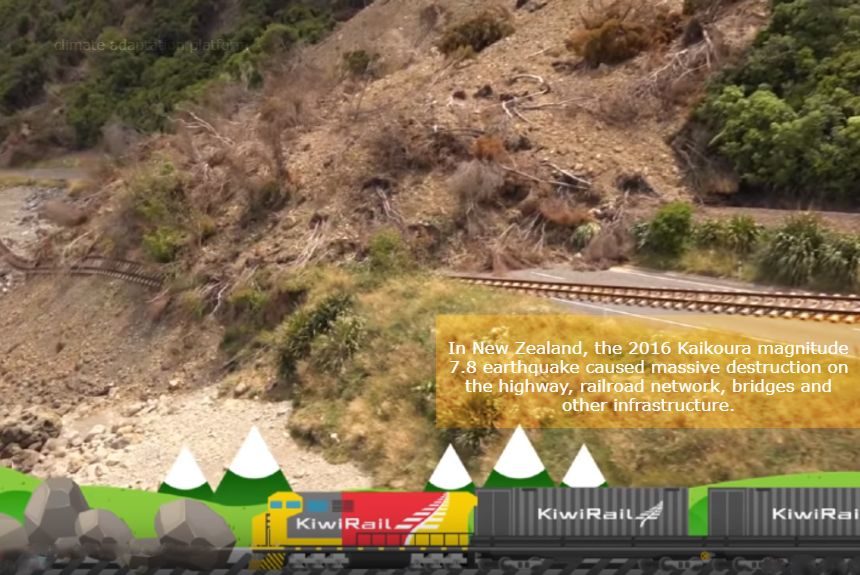The paper “A global multi-hazard risk analysis of road and railway” is the first of its kind to quantify the global risks of multiple natural hazards on road and rail infrastructure. Natural hazards here include hurricanes, earthquakes, tropical cyclones, and surface, river, and coastal flooding (Dr Elco Koks Wins, 2019).
Dr Koks, the lead researcher of the paper, is also a recipient of the prestigious Veni research grant of 250K Euros, which will allow him to work on “improving the resilience of global trade to climate extremes and development of successful adaptation measures” in the next 4 years (Dr Elco Koks wins, 2019).
The study that Koks et al. (2019) conducted discusses how transportation is the backbone of any prosperous economy and its role in providing access to markets, job creation, and social services, among many others. However, transportation around the world is increasingly exposed and at risk to multiple natural hazards, and thus, any services or opportunities—which are many—that the transportation infrastructure provides are under threat.
Koks et al. (2019) used the latest road and railway asset data through OpenStreetMap (OSM) and state-of-the-art global hazard maps to source transport infrastructure data and global risk assessment.
The study found that:
- 27% of all global road and railway assets are exposed to at least one hazard, and 7.5% of all assets are exposed to at least 1 in 100-year flooding.
- The Global Expected Annual Damages (EAD) due to direct damage to roads and railways range from 3.1 to 22 US billion dollars, of which 73% is caused by surface and river flooding.
- Spending 2% of the road value for better road design will produce a positive return for 60% of the roads that are exposed to at least one flood event, over 80% of the primary and secondary roads in upper-middle-income countries, and tertiary roads in lower and middle-income countries.
- Multiple studies show an upward trend in flooding, and flood hazards constitute 89% of the risk in transportation infrastructure. Hence, countries should improve transport planning by including risk information and improving the protection of their most vulnerable and critical assets. The economic and social benefits from doing so will go beyond direct infrastructure damage, like impacts on supply chains and production, and many others.
Some highlights of the study:
- The study examined the global exposure of transport infrastructure across 46,566 regions
to multiple hazards: its expected annual exposure (EAE) and return period of each
hazard for the region examined. - The Global Expected Annual Damages (EAD) represent between 0.2 and 1.5% of annual
global maintenance needs. A big chunk of the EAD is from surface and river flooding,
followed by coastal floods, earthquakes, and cyclones. - When EAD is assessed by the income of each country, high-income countries only
account for a quarter of the risks, while upper-middle-income countries bear
half, and the lower-middle-income income is almost a third of the global risks. This
finding means that richer countries have lower risks of multiple hazards compared
to lower-income countries because ‘they invest more in higher protection
standards of flood defence’. - The study showed 20 countries in which their transport infrastructure has the highest
risk of natural hazards. - And discussed how to reduce these risks by improving road designs.
The study provides data and information that will be useful for engineers, architects, and city planners involved in transport infrastructure management.
It also provides a model to integrate climate change and natural hazards, risks, and exposures into infrastructure planning and management, investments, and resource allocation. The latest global hazard mapping tools are used to assess risks, providing more accurate information and well-informed recommendations.
Surely, climate adaptation solutions must be considered in mitigating the multiple natural risks identified in Koks et al.’s study.
Read the full article by clicking on the button below.
Source Citation
Dr Elco Koks wins prestigious Veni grant, funded by the Dutch Research Council (NOW) (n.d.), ITRC mistral. Retrieved from https://www.itrc.org.uk/highlights/dr-elco-koks-wins-prestigious-veni-grant-funded-by-the-dutch-research-council-nwo/
Koks, E.E., Rozenberg, J., Zorn, C., Taruverdu M., Vousdoukas, M., Fraser, S.A., Hall, J.W., and Hallegatte, S. (2019). A global multi-hazard risk analysis of road and railway infrastructure assets. Nat Commun 10, 2677 doi:10.1038/s41467-019-10442-3. Retrieved from https://www.nature.com/articles/s41467-019-10442-3
PHOTO CREDIT: The background photo used in the featured image was grabbed from the NZ Transport Agency‘s video, “Kaikōura earthquake recovery – our story“



Leave a Reply